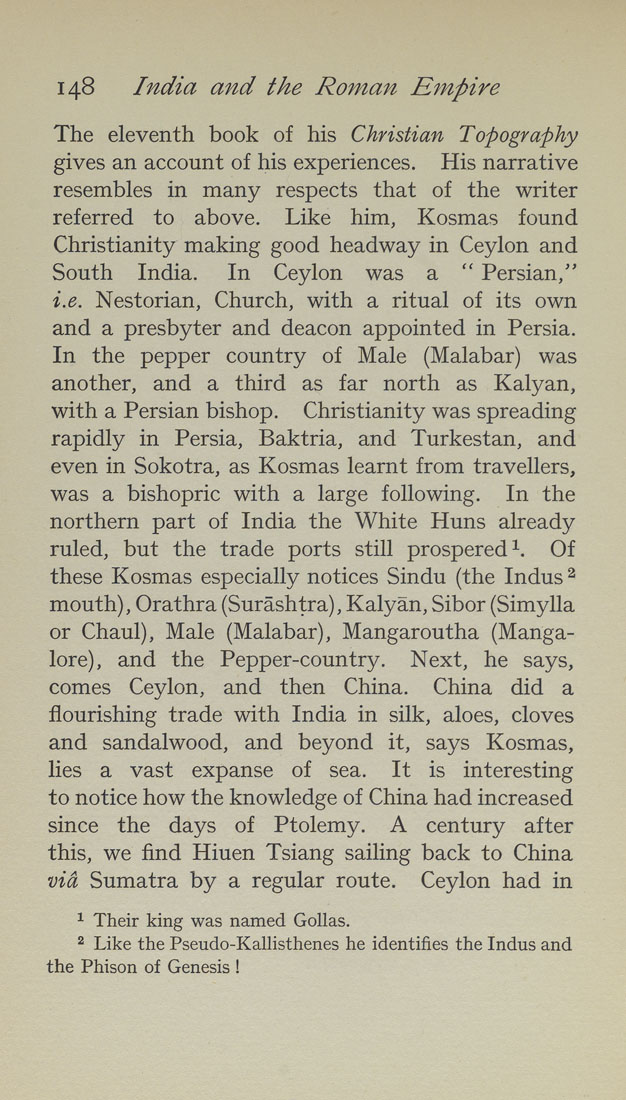148 India and the Roman Empire
The eleventh book of his Christian Topography
gives an account of his experiences. His narrative
resembles in many respects that of the writer
referred to above. Like him, Kosmas found
Christianity making good headway in Ceylon and
South India. In Ceylon was a " Persian,"
i.e. Nestorian, Church, with a ritual of its own
and a presbyter and deacon appointed in Persia.
In the pepper country of Male (Malabar) was
another, and a third as far north as Kalyan,
with a Persian bishop. Christianity was spreading
rapidly in Persia, Baktria, and Turkestan, and
even in Sokotra, as Kosmas learnt from travellers,
was a bishopric with a large following. In the
northern part of India the White Huns already
ruled, but the trade ports still prospered^. Of
these Kosmas especially notices Sindu (the Indus ^
mouth), Orathra (Surashtra), Kalyan, Sibor (Simylla
or Chaul), Male (Malabar), Mangaroutha (Manga¬
lore), and the Pepper-country. Next, he says,
comes Ceylon, and then China. China did a
flourishing trade with India in silk, aloes, cloves
and sandalwood, and beyond it, says Kosmas,
lies a vast expanse of sea. It is interesting
to notice how the knowledge of China had increased
since the days of Ptolemy. A century after
this, we find Hiuen Tsiang sailing back to China
via Sumatra by a regular route. Ceylon had in
^ Their king was named GoUas.
2 Like the Pseudo-Kallisthenes he identifies the Indus and
the Phison of Genesis !
|








